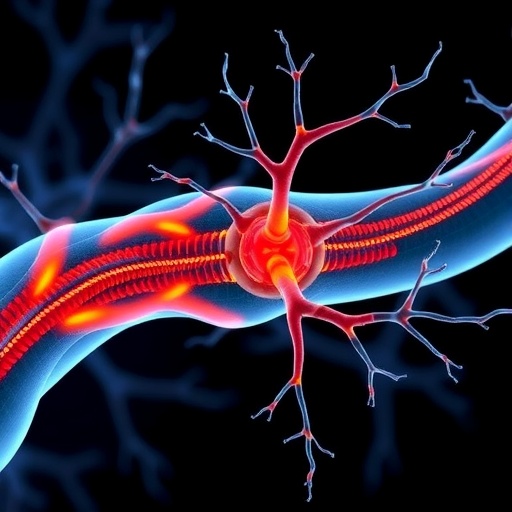In a groundbreaking endeavor that could transform pediatric eye care in the United States, researchers at the University of Houston (UH) and The Ohio State University are spearheading a $25 million, NIH-funded clinical trial aimed at delaying the onset of myopia, or nearsightedness, in children. This trial, the first of its kind on American soil, seeks to evaluate the efficacy of low-concentration atropine eyedrops as a preventive treatment for myopia in children between the ages of six and eleven. The initiative holds promise not only for reducing the prevalence of nearsightedness but also for mitigating the long-term sight-threatening complications linked with high myopia.
Myopia, characterized by the eye’s inability to clearly focus on distant objects, has reached epidemic proportions globally, affecting approximately one-third of adults in the U.S. alone. The underlying cause relates largely to structural changes in the eye—primarily axial elongation—which increase refractive error and exacerbate visual impairment. Epidemiological trends suggest that modern lifestyle changes, particularly reduced outdoor activities among children, contribute significantly to the increasing incidence of myopia. Understanding and intervening in its developmental mechanism is therefore a public health imperative.
The study, known as the Delaying the Onset of Nearsightedness Until Treatment (DONUT) Study, is designed as a multi-center randomized controlled trial involving over 600 pediatric participants recruited across 14 clinical centers, including UH, Ohio State, and other partners nationwide. Children at elevated risk for developing myopia—identified through precise cycloplegic refractions demonstrating diminished hyperopia by third grade—will be enrolled and randomized to receive either nightly 0.05% atropine eye drops or a placebo for a duration of two years. Success will be measured by the proportion of children who convert to myopia and by quantifying changes in ocular growth metrics, notably axial length.
Atropine, a non-selective muscarinic antagonist, has long been recognized for its mydriatic and cycloplegic properties. Recent research, particularly out of Asia, has revealed that low-dose atropine can slow myopia progression significantly when administered post-diagnosis. However, the novelty of the DONUT study lies in its preemptive approach: rather than treating myopia after onset, this trial experiments with administering atropine prior to diagnosis in high-risk children to prevent or delay the pathology itself. If successful, these findings could revolutionize standard care by promoting early prophylactic intervention.
The biological mechanisms by which atropine modulates myopia development are not entirely elucidated, but preclinical studies suggest that muscarinic receptor antagonism influences scleral remodeling and the signaling pathways that regulate ocular growth. By interfering with biochemical cascades implicated in axial elongation, atropine eye drops effectively modulate the structural changes that underlie refractive shifts. Furthermore, low concentrations reduce side effects commonly reported with higher doses, making the treatment more tolerable for long-term pediatric use.
The clinical significance of this work is profound. Progressive and high myopia increase the risk of severe ocular pathologies such as myopic maculopathy, retinal detachment, glaucoma, and early cataracts. These conditions can culminate in irreversible vision loss and impose substantial healthcare burdens globally. Current management strategies often focus on correcting refractive errors but fail to address the root cause—the aberrant growth of the eye. Consequently, interventions like the DONUT study’s atropine trial could shift the paradigm from correction to prevention.
This trial builds upon years of prior work by the research team, including studies revealing that multifocal contact lenses slow myopia progression effectively. Notably, previous UH-led investigations demonstrated that high-add multifocal contacts offered sustained myopia control benefits even after cessation of treatment. These insights into modulating peripheral retinal defocus and visual stimuli set the foundation for exploring pharmacological agents like atropine for early intervention.
The randomization process and masking of participants and investigators in the DONUT study are meticulously designed to ensure scientific rigor. Children receiving placebo drops will be closely monitored, and if they develop myopia during the trial, they will be transitioned to receive active atropine treatment. Additionally, all nearsighted participants will receive vouchers for corrective lenses annually, ensuring adequate vision correction while the study progresses. Such ethical considerations underscore the investigators’ commitment to both research integrity and patient welfare.
An intriguing aspect of the trial is the selection criteria emphasizing the predictive value of early refractive measurements. Children born with normal farsightedness who lose hyperopia by third grade are statistically likely to develop myopia by eighth grade, with nearly 90% accuracy. By enrolling these children before clinical onset, the study aims to harness a critical intervention window during which ocular growth can be modulated before irreversible pathological changes occur.
With myopia prevalence projected to impact half the world’s population by 2050, according to recent epidemiological models, the urgency of discovering effective preventive treatments cannot be overstated. The financial impacts are equally concerning; the economic burden of myopia correction in the United States alone ranges from $4 billion to $7 billion annually. Interventions that curb not only refractive error progression but also the necessity for expensive surgical or optical treatments could dramatically reduce these costs and improve quality of life on a large scale.
The broader scientific and clinical communities will be closely watching the outcomes of this trial. Should low-dose atropine prove effective at delaying the onset of myopia in this population, it could prompt revisions in clinical guidelines and widespread adoption of prophylactic treatments for at-risk pediatric patients. Moreover, subsequent research into optimizing dosing regimens, long-term safety, and delivery methods is likely to follow, fueling further advances in myopia management.
In conclusion, the DONUT study represents a critical leap forward in combating a rising global visual health crisis through strategic, early intervention. By targeting the underlying biological mechanisms with a safe, pharmacological agent administered before disease onset, this research offers hope for altering the trajectory of myopia development and reducing lifelong vision impairment risks. Its success could pave the way for evidence-based preventive therapies, heralding a new era in optometric and ophthalmologic practice.
Subject of Research: Myopia prevention using low-concentration atropine eye drops in children
Article Title: Pioneering Study to Delay Childhood Myopia Onset Through Low-Dose Atropine Intervention
News Publication Date: Not specified in the provided content
Web References:
Atropine Drug Information: https://medlineplus.gov/druginfo/meds/a682487.html
National Eye Institute Myopia Information: https://www.nei.nih.gov/learn-about-eye-health/eye-conditions-and-diseases/nearsightedness-myopia
UH Multifocal Contacts Study (2020): https://www.uh.edu/news-events/stories/2020/august-2020/08112020-multifocal-contacts-slow-myopia-progression-in-children.php
UH Blink Study (2025): https://www.uh.edu/news-events/stories/2025/january/01162025-berntsen-blink-2-study.php
Image Credits: University of Houston
Keywords: Myopia, Vision disorders, Nearsightedness, Clinical trials, Atropine, Pediatrics, Axial elongation, Ophthalmology, Optometry, Myopia prevention, Eye growth, Clinical studies
Tags: axial elongation and refractive errorchildhood nearsightedness preventionclinical trial on nearsightednessDONUT Study myopia triallow-concentration atropine eyedropsmyopia epidemic in childrenNIH grant myopia researchoutdoor activities and myopiapublic health myopia interventiontransformative eye care initiativesUniversity of Houston pediatric eye carevisual impairment in children





